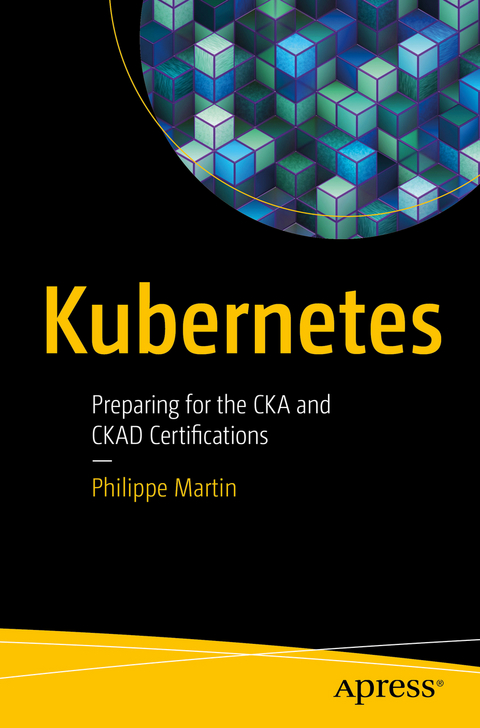
Kubernetes
Apress (Verlag)
978-1-4842-6493-5 (ISBN)
The initial chapters guide you through deployment of a Kubernetes cluster on virtual machines and explore the different components of the control plane. Next, you will work with the kubectl command-line tool; namespaces, labels, selectors, and annotations—common resources used through the Kubernetes API. The following chapters describe the principle of controllers and detail how workload controllers work as well as the possibilities for configuring deployed applications.
You will also learn how to deploy a scalable and self-healing application, how pods are scheduled to nodes, how parts of the application can communicate, and how the application is discoverable from the outside. Next, you will cover security concerns describing the different authentication methods, the RBAC authorization mode, security contexts, network policies, and how to secure container images. You will also cover using persistent volumes for your containers to store long-term data, monitoring your clusters and applications and implementing design patterns for multi-container pods. The concluding chapters guide you through the upgrade of your deployed cluster.
After reading this book, you will have enough knowledge to deploy a complex application using a Kubernetes cluster and be ready for the certification exams.
What You Will Learn
Deploy a Kubernetes cluster with kubeadm and learn how the control plane works
Discover how the Kubernetes API is structured
Deploy secure, auto-scaled, and self-healing applications
Master the kubectl command-line tool
Who This Book Is For
Administrators and application developers with good knowledge of micro-services development and deployment.
Philippe Martin has been working with Kubernetes for three years, first by creating an operator to deploy video CDNs into the cloud, later helping companies deploy their applications into Kubernetes. Philippe passed the CKAD certification about a year ago and the CKA certification recently. He has long experience with distributed systems and open-source software: he started his career 20 years ago creating thin clients based on the Linux kernel and open source components. Philippe is active in the development of Kubernetes, especially its documentation, and participates in the translation of the official documentation into French, has edited two reference books about the Kubernetes API and kubectl, and is responsible for the French translation of the Kubernetes Dashboard.
Chapter 1: Creating a Cluster with kubeadm.- Chapter 2: Control Plane Components.- Chapter 3: Accessing the Cluster.- Chapter 4: Kubernetes Resources.- Chapter 5: The Workloads.- Chapter 6: Configuring Applications.- Chapter 7: Scaling an Application.- Chapter 8: Application Self-Healing.- Chapter 9: Scheduling Pods.- Chapter 10: Discovery and Load Balancing.- Chapter 11: Security.- Chapter 12: Storage.- Chapter 13: Monitoring and Logging.- Chapter 14: Upgrading the Cluster.- Chapter 15: kubectl.
| Erscheinungsdatum | 16.01.2021 |
|---|---|
| Zusatzinfo | 2 Illustrations, black and white; XIX, 231 p. 2 illus. |
| Verlagsort | Berkley |
| Sprache | englisch |
| Maße | 155 x 235 mm |
| Themenwelt | Mathematik / Informatik ► Informatik ► Netzwerke |
| Informatik ► Weitere Themen ► Zertifizierung | |
| Schlagworte | Certification • Cloud Native • Cluster • Container • Kubernetes • Micro-Services • Orchestrator |
| ISBN-10 | 1-4842-6493-2 / 1484264932 |
| ISBN-13 | 978-1-4842-6493-5 / 9781484264935 |
| Zustand | Neuware |
| Informationen gemäß Produktsicherheitsverordnung (GPSR) | |
| Haben Sie eine Frage zum Produkt? |
aus dem Bereich


